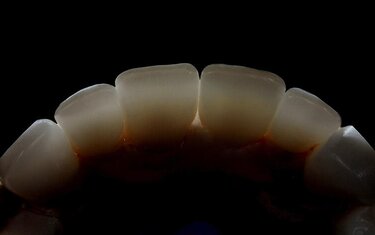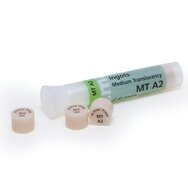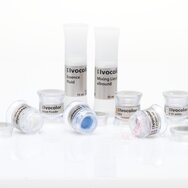The staining technique has become increasingly relevant to the fabrication of all-ceramic monolithic restorations. A major advantage of this technique is that it saves cost and time in the laboratory. Discover here a method to accomplish your restorations quickly and efficiently without having to lower your standards for esthetics. A few simple tips can make all the difference.
Fabricating monolithic restorations in conjunction with the staining technique is seen as an efficient process to create all-ceramic restorations. The method takes into account the price pressure that many dental laboratories face. However, even with a streamlined process, no corners should be cut when it comes to the esthetic qualities of a restoration. Just how can you reconcile efficiency with esthetics? This is where expertise, skill and good design are needed.
Similar to the layering technique, the staining technique can be a highly skilled craft. After all, we technicians are highly trained experts who have learned to reproduce the natural tooth structure from scratch using ceramic materials. This is a competitive advantage that also comes in handy when the staining technique is used. The aim is to maximize the possibilities of modern materials, without, however, diminishing the efficiency and cost effectiveness of the staining technique.
Modern all-ceramic materials impress users with their esthetic potential. This is why the staining technique can be used in many situations to achieve successful results. Even in the esthetically sensitive anterior area, these materials can lead to highly esthetic outcomes. To get there, you will need to use a framework material that offers a high degree of translucency, such as lithium disilicate (IPS e.max Press or IPS e.max CAD). The latest zirconium oxide materials also feature beneficial translucent properties. Some of these materials incorporate a smooth progression of shade and translucency (e.g. IPS e.max ZirCAD Prime, Ivoclar). This kind of zirconia material is ideally suited for the fabrication of veneer-free restorations.
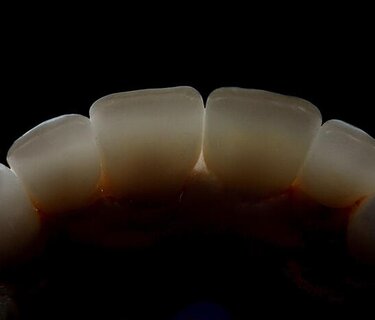
Image above: IPS e.max ZirCAD Prime features a smooth progression of shade and translucency. Image: Aiham Farah
Staining technique vs labial veneering
Labial veneering is a popular alternative to conventional veneering. Framework materials have been continuously improving and some of them are now available in a polychromatic version. These developments have been contributing to the increasing popularity of monolithic restorations. High efficiency is one of the advantages over the veneering technique. Another advantage is that monolithic restorations eliminate the risk of chipping. Moreover, monolithic zirconia restorations allow extremely minimally invasive preparations because they do not involve any veneering material and therefore require less space.
How natural is the translucency created by staining?
When the staining technique is used, the translucency of the natural tooth is commonly recreated by applying bluish stains. In some circumstances, the resulting effect can look ‘painted on’ and superficial, depending on the way the light touches the surface. This is where you can really benefit from a polychromatic framework material with an integrated progression of translucency. This way, IPS e.max ZirCAD Prime provides the incisal area with ‘real’ translucency. So, you can fully focus on creating other visual customizations, such as opalescence, mamelons, enamel cracks and halo effects. Illusions of natural characteristics can be achieved with craftsmanship and a versatile range of stains and glazes (e.g. IPS Ivocolor, Ivoclar).
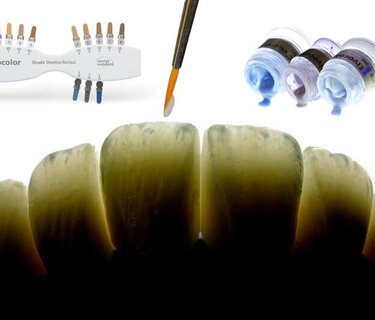
Image above: Characterizing the incisal area using IPS Ivocolor Shade Incisal. Image: Aiham Farah
Is the staining technique a jack of all trades?
We technicians know that the shade of natural teeth can be very varied. This is what gives natural teeth their individual beauty. However, the complexity that arises from this individuality demands high standards from us. Especially in the anterior region, even the slightest deviations can give away a restoration. To prevent this from happening, an esthetic design that takes individuality into account should be followed. The staining technique is a good allrounder but it is not a jack of all trades. Staining technique, layering technique, micro-layering (ultra-thin layering): any of these techniques can be appropriate. The important thing is to look at the individual needs of the patient, the tooth structure, quality of the abutments and the adjacent teeth and then decide on the most suitable approach.
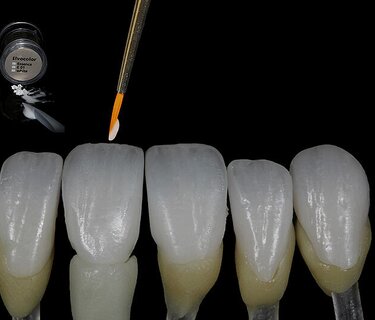
Image above: Micro-layering using IPS e.max Ceram. Image: Aiham Farah
Providing milled restorations with surface texture
Shade is not the only thing that matters. To add liveliness to monolithic restorations, they need to be provided with surface texture. Texture and morphological features are applied by hand to create the basis for the natural ‘play of light’ seen with incident light.
He describes each step in the process of finalizing a milled monolithic restoration by hand using rotary burs and he does so efficiently and with technical skill.
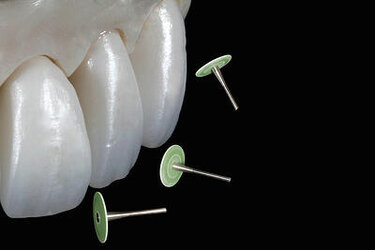
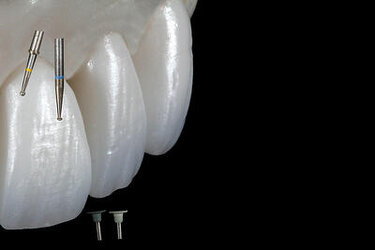
Image above: Creating natural surface textures using rotary instruments Images: Aiham Farah
Do you have what it takes?
The high-strength IPS e.max ZirCAD Prime and the versatile IPS Ivocolor stain and glaze system provide an ideal combination of materials that enable you to achieve efficient restorations without having to lower your standards for esthetics. The ‘best’ material requires expert hands to live up to its full potential. It is skill that turns the staining technique into craftsmanship.
Receive our monthly newsletter on recently published blog articles, upcoming education programs and exciting new product campaigns!
